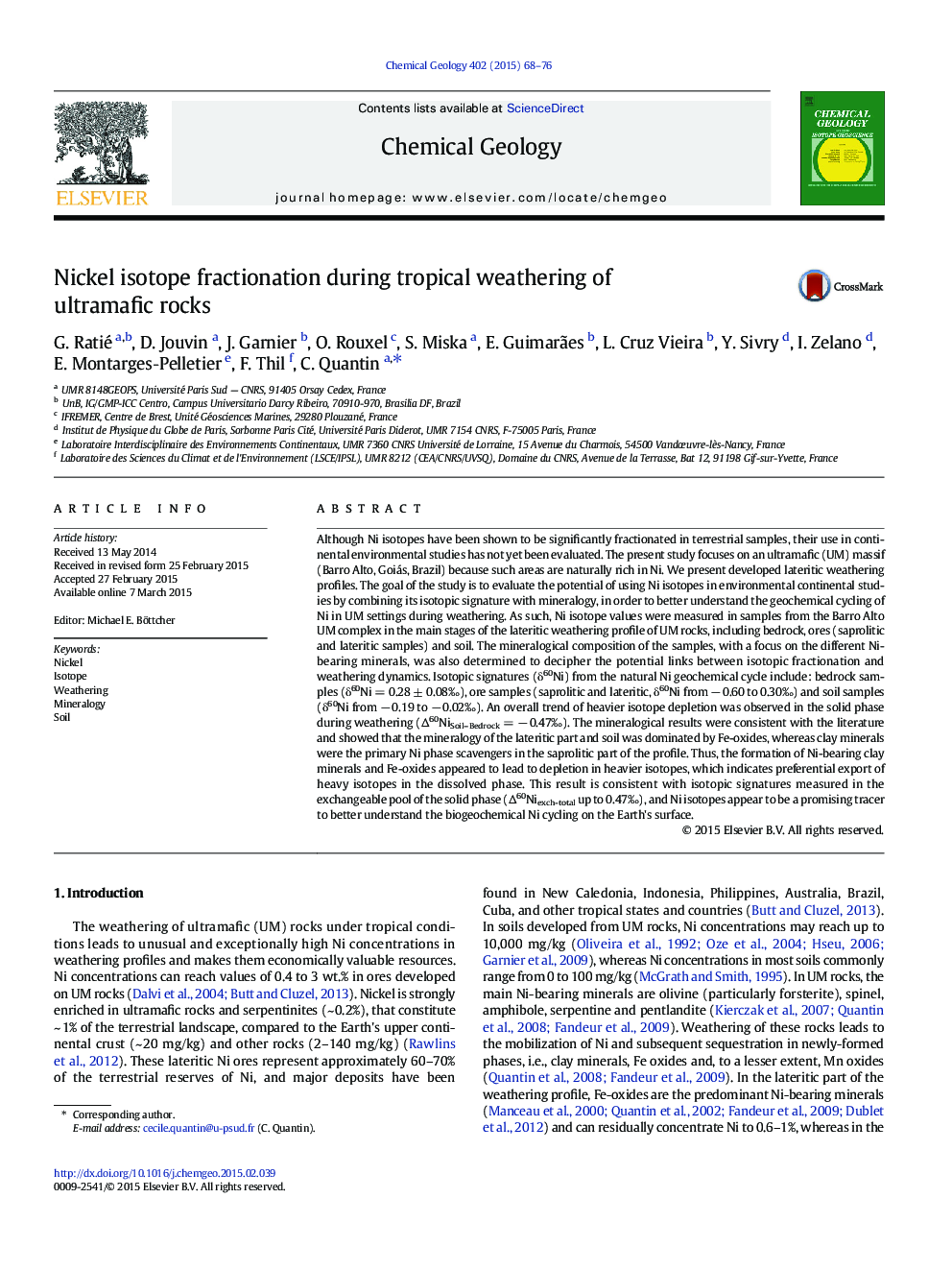| کد مقاله | کد نشریه | سال انتشار | مقاله انگلیسی | نسخه تمام متن |
|---|---|---|---|---|
| 4698551 | 1637571 | 2015 | 9 صفحه PDF | دانلود رایگان |
• Ultramafic rock weathering leads to depletion in Ni heavier isotopes.
• Heavier Ni isotopes are exported into the dissolved or exchangeable phases.
• Ni lateritic profiles appear to be a sink of isotopically light nickel.
• Ni bearing phases ought to control Ni isotope composition.
Although Ni isotopes have been shown to be significantly fractionated in terrestrial samples, their use in continental environmental studies has not yet been evaluated. The present study focuses on an ultramafic (UM) massif (Barro Alto, Goiás, Brazil) because such areas are naturally rich in Ni. We present developed lateritic weathering profiles. The goal of the study is to evaluate the potential of using Ni isotopes in environmental continental studies by combining its isotopic signature with mineralogy, in order to better understand the geochemical cycling of Ni in UM settings during weathering. As such, Ni isotope values were measured in samples from the Barro Alto UM complex in the main stages of the lateritic weathering profile of UM rocks, including bedrock, ores (saprolitic and lateritic samples) and soil. The mineralogical composition of the samples, with a focus on the different Ni-bearing minerals, was also determined to decipher the potential links between isotopic fractionation and weathering dynamics. Isotopic signatures (δ60Ni) from the natural Ni geochemical cycle include: bedrock samples (δ60Ni = 0.28 ± 0.08‰), ore samples (saprolitic and lateritic, δ60Ni from − 0.60 to 0.30‰) and soil samples (δ60Ni from − 0.19 to − 0.02‰). An overall trend of heavier isotope depletion was observed in the solid phase during weathering (Δ60NiSoil–Bedrock = − 0.47‰). The mineralogical results were consistent with the literature and showed that the mineralogy of the lateritic part and soil was dominated by Fe-oxides, whereas clay minerals were the primary Ni phase scavengers in the saprolitic part of the profile. Thus, the formation of Ni-bearing clay minerals and Fe-oxides appeared to lead to depletion in heavier isotopes, which indicates preferential export of heavy isotopes in the dissolved phase. This result is consistent with isotopic signatures measured in the exchangeable pool of the solid phase (Δ60Niexch-total up to 0.47‰), and Ni isotopes appear to be a promising tracer to better understand the biogeochemical Ni cycling on the Earth's surface.
Journal: Chemical Geology - Volume 402, 8 May 2015, Pages 68–76
